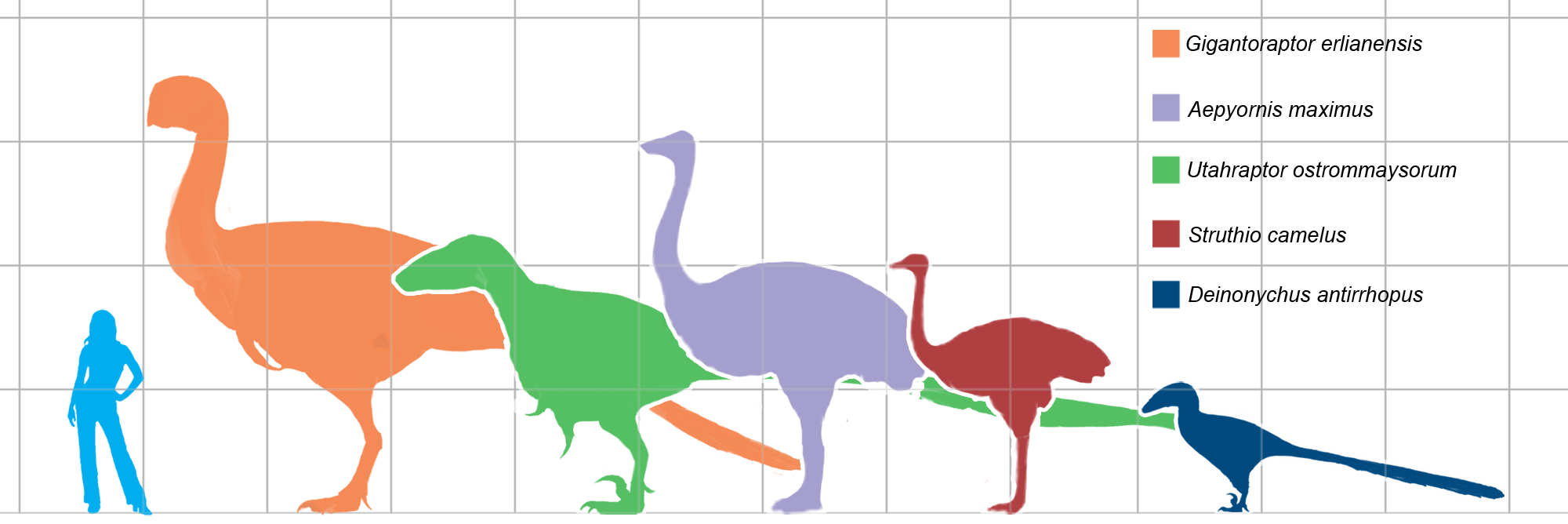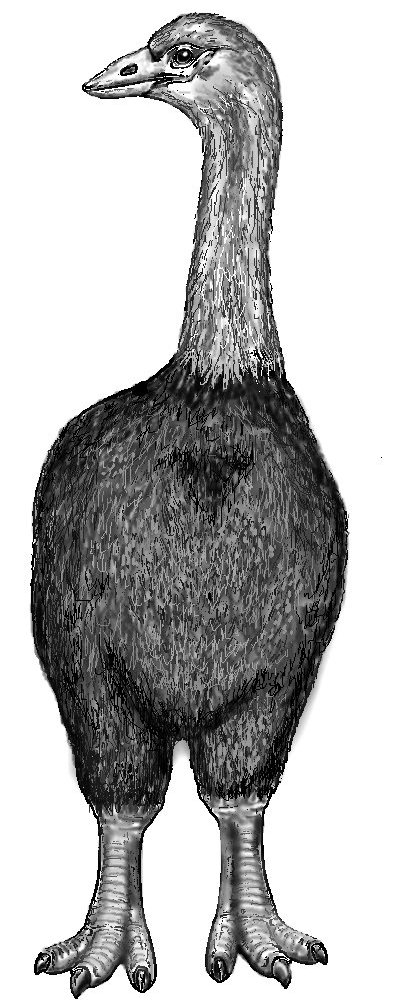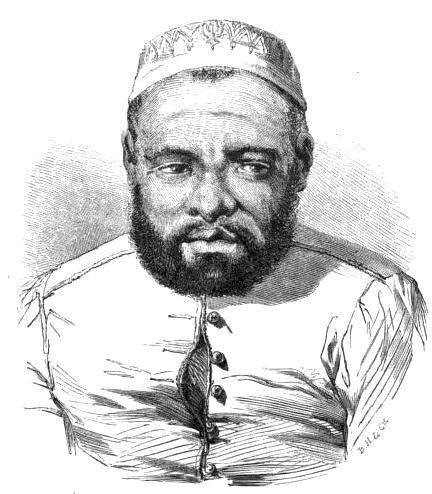|
Mullerornis
''Mullerornis'' is a genus of extinct elephant birds (Aepyornithidae) of Madagascar. Description ''Mullerornis'' is smaller than the more well-known '' Aepyornis''. A bone possibly belonging to ''Mullerornis'' has been radiocarbon dated to about 1260 BP, suggesting that the animal was still extant at the end of the first millennium. ''Aepyornis modestus'' was shown by Hansford and Turvey (2018) to be a senior synonym of all nominal ''Mullerornis'' species described by Milne-Edwards and Grandidier (1894), resulting in the new combination ''Mullerornis modestus''. Nocturnality Like other aepyornithids and its close kiwi relatives, ''Mullerornis'' was nocturnal, though it shows less optical lobe reduction than these other taxa, implying slightly more crepuscular habits. Etymology The genus is named after Georges Muller, a French explorer, who was killed in 1892 by hostile members of the Sakalava people The Sakalava are an ethnic group of Madagascar. They are found on the we ... [...More Info...] [...Related Items...] OR: [Wikipedia] [Google] [Baidu] |
Mullerornis Agilis
''Mullerornis'' is a genus of extinct elephant birds (Aepyornithidae) of Madagascar. Description ''Mullerornis'' is smaller than the more well-known ''Aepyornis''. A bone possibly belonging to ''Mullerornis'' has been radiocarbon dated to about 1260 BP, suggesting that the animal was still extant at the end of the first millennium. ''Aepyornis modestus'' was shown by Hansford and Turvey (2018) to be a senior synonym of all nominal ''Mullerornis'' species described by Milne-Edwards and Grandidier (1894), resulting in the new combination ''Mullerornis modestus''. Nocturnality Like other aepyornithids and its close kiwi relatives, ''Mullerornis'' was nocturnal, though it shows less optical lobe reduction than these other taxa, implying slightly more crepuscular habits. Etymology The genus is named after Georges Muller, a French explorer, who was killed in 1892 by hostile members of the Sakalava people The Sakalava are an ethnic group of Madagascar. They are found on the weste ... [...More Info...] [...Related Items...] OR: [Wikipedia] [Google] [Baidu] |
Elephant Bird
Elephant birds are members of the extinct ratite family Aepyornithidae, made up of flightless birds that once lived on the island of Madagascar. They are thought to have become extinct around 1000-1200 CE, probably as a result of human activity. Elephant birds comprised the genera ''Mullerornis'', ''Vorombe'' and ''Aepyornis''. While they were in close geographical proximity to the ostrich, their closest living relatives are kiwi (found only in New Zealand), suggesting that ratites did not diversify by vicariance during the breakup of Gondwana but instead evolved from ancestors that dispersed more recently by flying. In September 2018, scientists determined that ''Vorombe titan'' reached weights of and stood tall, making it the world's largest and heaviest bird, slightly larger than the much older ''Dromornis stirtoni''. Other members of the family were also very large, exhibiting the phenomenon of island gigantism. Description Elephant birds have been extinct since at lea ... [...More Info...] [...Related Items...] OR: [Wikipedia] [Google] [Baidu] |
Elephant Birds
Elephant birds are members of the Extinction, extinct ratite family (biology), family Aepyornithidae, made up of flightless birds that once lived on the island of Madagascar. They are thought to have become extinct around 1000-1200 CE, probably as a result of human activity. Elephant birds comprised the genus, genera ''Mullerornis'', ''Vorombe'' and ''Aepyornis''. While they were in close geographical proximity to the ostrich, their closest living relatives are Kiwi (bird), kiwi (found only in New Zealand), suggesting that ratites did not diversify by vicariance during the breakup of Gondwana but instead evolved from ancestors that dispersed more recently by flying. In September 2018, scientists determined that ''Vorombe titan'' reached weights of and stood tall, making it the world's largest and heaviest bird, slightly larger than the much older ''Dromornis stirtoni''. Other members of the family were also very large, exhibiting the phenomenon of island gigantism. Descriptio ... [...More Info...] [...Related Items...] OR: [Wikipedia] [Google] [Baidu] |
Aepyornis
''Aepyornis'' is a genus of aepyornithid, one of three genera of ratite birds endemic to Madagascar until their extinction sometime around 1000 CE. The species ''A. maximus'' weighed up to , and until recently was regarded as the largest known bird of all time. However, in 2018 the largest aepyornithid specimens, weighing up to , were moved to the related genus ''Vorombe''. Its closest living relative is the New Zealand kiwi. Taxonomy Brodkorb (1963) listed four species of ''Aepyornis'' as valid: ''A. hildebrandti'', ''A. gracilis'', ''A. medius'' and ''A. maximus''. However, Hume and Walters (2012) listed only one species, ''A. maximus''. Most recently, Hansford and Turvey (2018) recognized only ''A. hildebrandti'' and ''A. maximus''. * ?''A. grandidieri'' Rowley 1867 nomen dubium * ''Aepyornis hildebrandti'' Burckhardt, 1893 (Hildebrandt's elephant-bird) ** ''Aepyornis gracilis'' Monnier, 1913 ** ''Aepyornis lentus'' Milne-Edwards & Grandidier, 1894 ** ?''Aepyornis minimus' ... [...More Info...] [...Related Items...] OR: [Wikipedia] [Google] [Baidu] |
Madagascar
Madagascar (; mg, Madagasikara, ), officially the Republic of Madagascar ( mg, Repoblikan'i Madagasikara, links=no, ; french: République de Madagascar), is an island country in the Indian Ocean, approximately off the coast of East Africa across the Mozambique Channel. At Madagascar is the world's List of island countries, second-largest island country, after Indonesia. The nation is home to around 30 million inhabitants and consists of the island of Geography of Madagascar, Madagascar (the List of islands by area, fourth-largest island in the world), along with numerous smaller peripheral islands. Following the prehistoric breakup of the supercontinent Gondwana, Madagascar split from the Indian subcontinent around 90 million years ago, allowing native plants and animals to evolve in relative isolation. Consequently, Madagascar is a biodiversity hotspot; over 90% of wildlife of Madagascar, its wildlife is endemic. Human settlement of Madagascar occurred during or befo ... [...More Info...] [...Related Items...] OR: [Wikipedia] [Google] [Baidu] |
Radiocarbon Dating
Radiocarbon dating (also referred to as carbon dating or carbon-14 dating) is a method for determining the age of an object containing organic material by using the properties of radiocarbon, a radioactive isotope of carbon. The method was developed in the late 1940s at the University of Chicago by Willard Libby. It is based on the fact that radiocarbon () is constantly being created in the Earth's atmosphere by the interaction of cosmic rays with atmospheric nitrogen. The resulting combines with atmospheric oxygen to form radioactive carbon dioxide, which is incorporated into plants by photosynthesis; animals then acquire by eating the plants. When the animal or plant dies, it stops exchanging carbon with its environment, and thereafter the amount of it contains begins to decrease as the undergoes radioactive decay. Measuring the amount of in a sample from a dead plant or animal, such as a piece of wood or a fragment of bone, provides information that can be used to calc ... [...More Info...] [...Related Items...] OR: [Wikipedia] [Google] [Baidu] |
Before Present
Before Present (BP) years, or "years before present", is a time scale used mainly in archaeology, geology and other scientific disciplines to specify when events occurred relative to the origin of practical radiocarbon dating in the 1950s. Because the "present" time changes, standard practice is to use 1 January 1950 as the commencement date (epoch) of the age scale. The abbreviation "BP" has been interpreted retrospectively as "Before Physics", which refers to the time before nuclear weapons testing artificially altered the proportion of the carbon isotopes in the atmosphere, which scientists must now account for. In a convention that is not always observed, many sources restrict the use of BP dates to those produced with radiocarbon dating; the alternative notation RCYBP stands for the explicit "radio carbon years before present". Usage The BP scale is sometimes used for dates established by means other than radiocarbon dating, such as stratigraphy. This usage differs from t ... [...More Info...] [...Related Items...] OR: [Wikipedia] [Google] [Baidu] |
Kiwi (bird)
Kiwi ( ) are flightless birds endemic to New Zealand of the order Apterygiformes. The five extant species fall into the family Apterygidae () and genus ''Apteryx'' (). Approximately the size of a domestic chicken, kiwi are by far the smallest living ratites (which also include ostriches, emus, rheas and cassowaries). However, the ratite group is polyphyletic, and cladistically also includes tinamous, which can also be of moderate size. Members of this expanded group are known as paleognaths. DNA sequence comparisons have yielded the conclusion that kiwi are much more closely related to the extinct Malagasy elephant birds than to the moa with which they shared New Zealand. There are five recognised species, four of which are currently listed as vulnerable, and one of which is near-threatened. All species have been negatively affected by historic deforestation, but their remaining habitat is well-protected in large forest reserves and national parks. At present, the greates ... [...More Info...] [...Related Items...] OR: [Wikipedia] [Google] [Baidu] |
Sakalava People
The Sakalava are an ethnic group of Madagascar. They are found on the western and northwest region of the island, in a band along the coast. The Sakalava are one of the smaller ethnic groups, constituting about 6.2 percent of the total population, that is over 1,210,000 in 2014. Their name means "people of the long valleys." They occupy the western edge of the island from Toliara in the south to the Sambirano River in the north. Ethnic identity The Sakalava denominate a number of smaller ethnic groups that once comprised an empire, rather than an ethnic group in its own right. The origin of the word ''Sakalava'' itself is still subject to controversy, as well as its actual meaning. The most common explanation is the modern Malagasy translation of Sakalava meaning long ravines, denoting the relatively flat nature of the land in western Madagascar. Another theory is that the word is possibly from the Arabic ''saqaliba'', which is in turn derived from Late Latin ''sclavus'', meani ... [...More Info...] [...Related Items...] OR: [Wikipedia] [Google] [Baidu] |
Holocene Extinctions
The Holocene ( ) is the current geological epoch. It began approximately 11,650 cal years Before Present (), after the Last Glacial Period, which concluded with the Holocene glacial retreat. The Holocene and the preceding Pleistocene together form the Quaternary period. The Holocene has been identified with the current warm period, known as MIS 1. It is considered by some to be an interglacial period within the Pleistocene Epoch, called the Flandrian interglacial.Oxford University Press – Why Geography Matters: More Than Ever (book) – "Holocene Humanity" section https://books.google.com/books?id=7P0_sWIcBNsC The Holocene corresponds with the rapid proliferation, growth and impacts of the human species worldwide, including all of its written history, technological revolutions, development of major civilizations, and overall significant transition towards urban living in the present. The human impact on modern-era Earth and its ecosystems may be considered of global sig ... [...More Info...] [...Related Items...] OR: [Wikipedia] [Google] [Baidu] |






